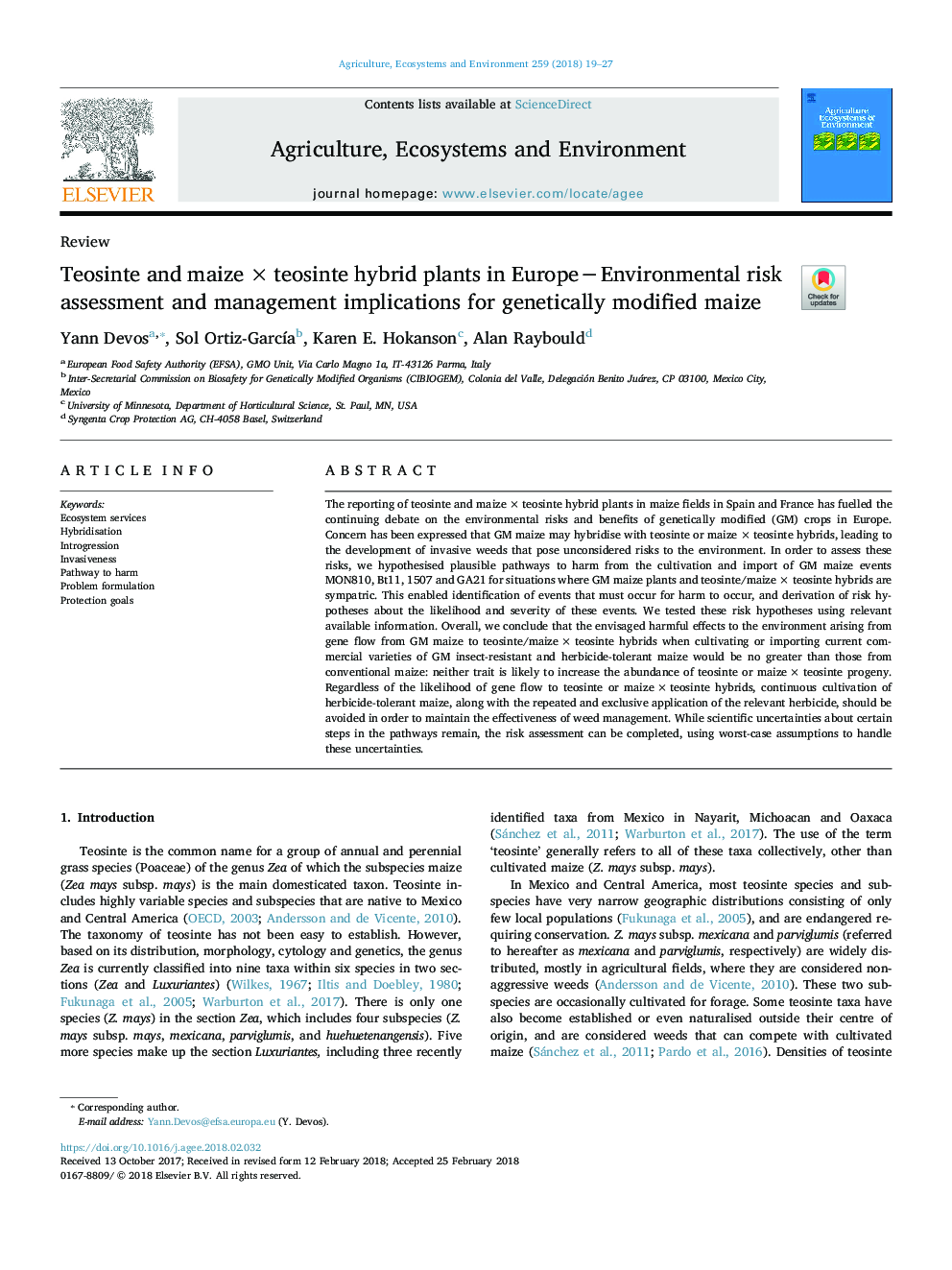| کد مقاله | کد نشریه | سال انتشار | مقاله انگلیسی | نسخه تمام متن |
|---|---|---|---|---|
| 8487091 | 1551993 | 2018 | 9 صفحه PDF | دانلود رایگان |
عنوان انگلیسی مقاله ISI
Teosinte and maizeâ¯Ãâ¯teosinte hybrid plants in EuropeâEnvironmental risk assessment and management implications for genetically modified maize
دانلود مقاله + سفارش ترجمه
دانلود مقاله ISI انگلیسی
رایگان برای ایرانیان
کلمات کلیدی
موضوعات مرتبط
علوم زیستی و بیوفناوری
علوم کشاورزی و بیولوژیک
علوم زراعت و اصلاح نباتات
پیش نمایش صفحه اول مقاله

چکیده انگلیسی
The reporting of teosinte and maizeâ¯Ãâ¯teosinte hybrid plants in maize fields in Spain and France has fuelled the continuing debate on the environmental risks and benefits of genetically modified (GM) crops in Europe. Concern has been expressed that GM maize may hybridise with teosinte or maizeâ¯Ãâ¯teosinte hybrids, leading to the development of invasive weeds that pose unconsidered risks to the environment. In order to assess these risks, we hypothesised plausible pathways to harm from the cultivation and import of GM maize events MON810, Bt11, 1507 and GA21 for situations where GM maize plants and teosinte/maizeâ¯Ãâ¯teosinte hybrids are sympatric. This enabled identification of events that must occur for harm to occur, and derivation of risk hypotheses about the likelihood and severity of these events. We tested these risk hypotheses using relevant available information. Overall, we conclude that the envisaged harmful effects to the environment arising from gene flow from GM maize to teosinte/maizeâ¯Ãâ¯teosinte hybrids when cultivating or importing current commercial varieties of GM insect-resistant and herbicide-tolerant maize would be no greater than those from conventional maize: neither trait is likely to increase the abundance of teosinte or maizeâ¯Ãâ¯teosinte progeny. Regardless of the likelihood of gene flow to teosinte or maizeâ¯Ãâ¯teosinte hybrids, continuous cultivation of herbicide-tolerant maize, along with the repeated and exclusive application of the relevant herbicide, should be avoided in order to maintain the effectiveness of weed management. While scientific uncertainties about certain steps in the pathways remain, the risk assessment can be completed, using worst-case assumptions to handle these uncertainties.
ناشر
Database: Elsevier - ScienceDirect (ساینس دایرکت)
Journal: Agriculture, Ecosystems & Environment - Volume 259, 1 May 2018, Pages 19-27
Journal: Agriculture, Ecosystems & Environment - Volume 259, 1 May 2018, Pages 19-27
نویسندگان
Yann Devos, Sol Ortiz-GarcÃa, Karen E. Hokanson, Alan Raybould,